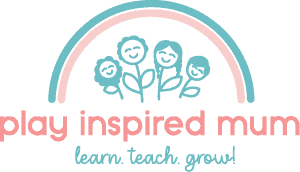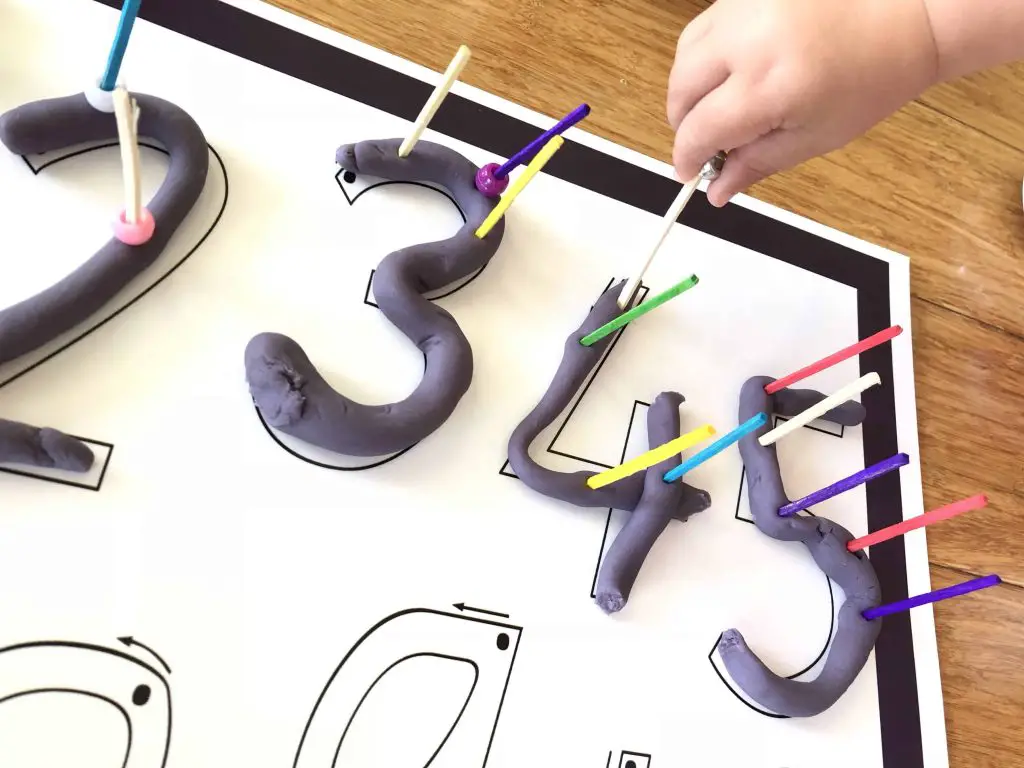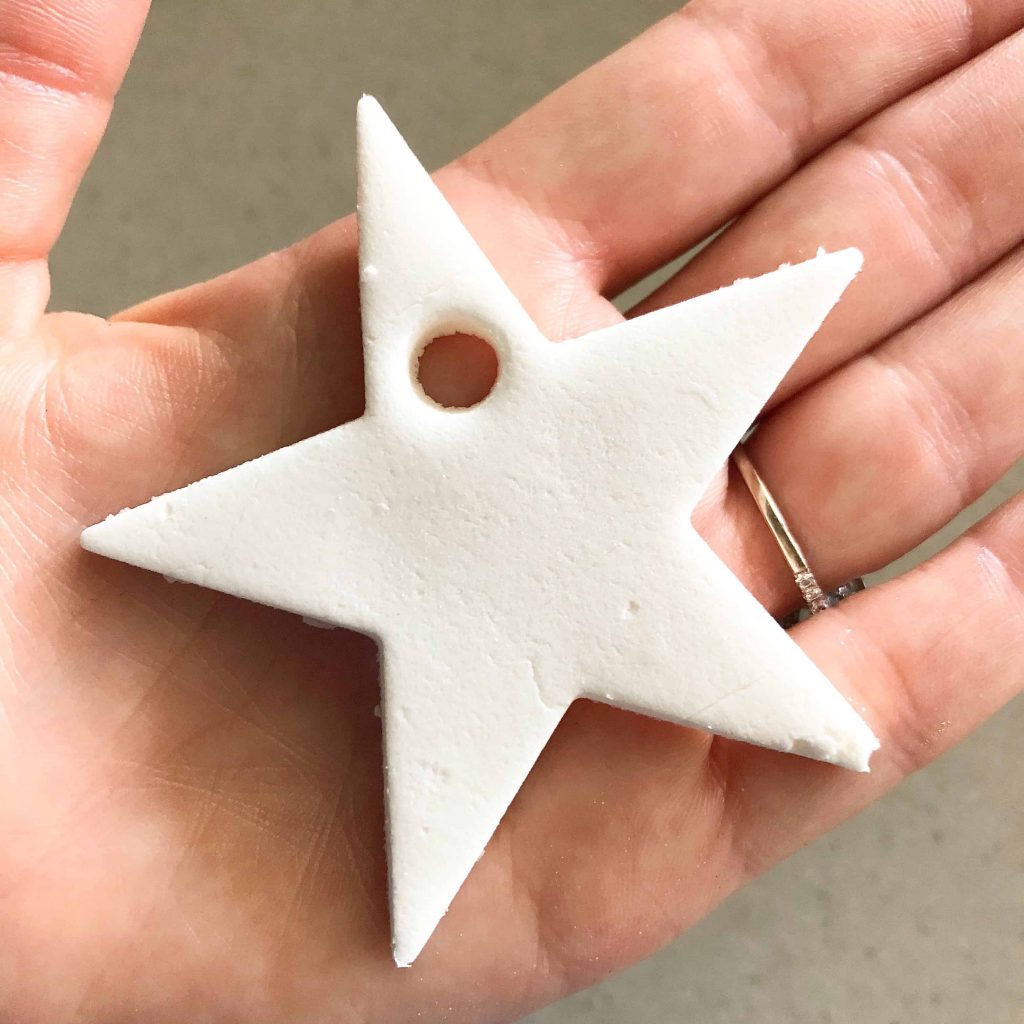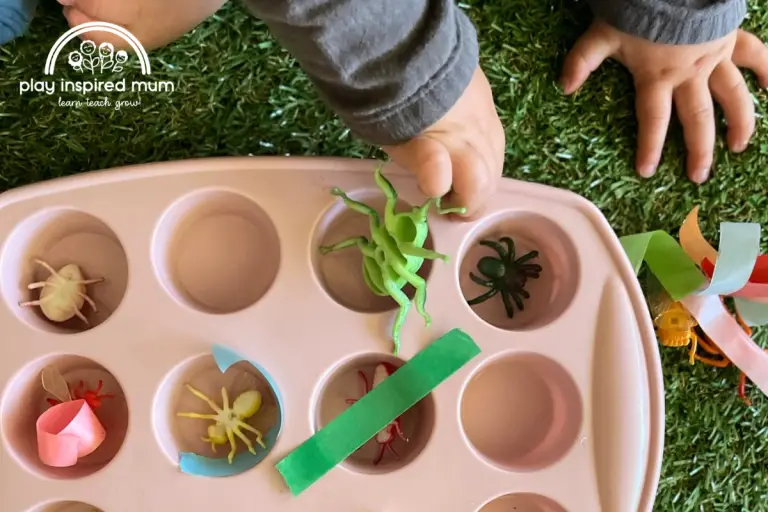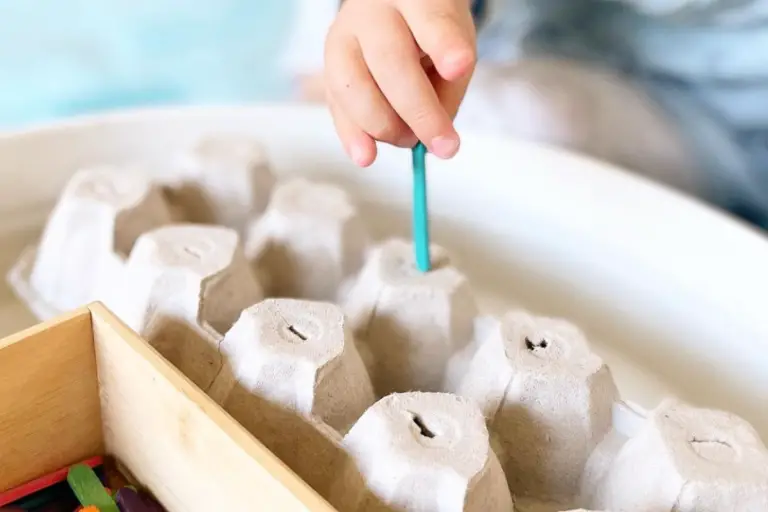First Steps in the Writing World: Guiding Preschoolers
Disclosure: This blog contains affiliate links which I may earn a small commission from if you purchase through them, at no extra cost to you.
Writing is a fundamental skill that serves as a building block for literacy and communication.
It begins long before children pick up a pencil.
In preschool, children embark on an exciting journey into the world of writing.
A place where they explore letters, sounds, and the joy of expression.
At this stage, writing is not just about forming letters.
Writing in preschool encompasses fine motor development, cognitive skills, and creativity.
As preschoolers engage in various activities—from scribbling and drawing to practicing letter shapes—they develop the confidence and foundational skills needed for more advanced writing tasks in the future.
In this article, we will explore the significance of writing in preschool.
We will also discuss effective teaching strategies, and fun activities that nurture a love for writing in young learners.

First Steps in the Writing World: Guiding Preschoolers
Understanding how best to guide young children through the initial stages of writing comes from grasping writing milestones and stages of emergent writing.
Discovering the vast world of letters, their forms, and the ways to string them together has proven to be an essential step for preschoolers.
To succeed as a writer, preschoolers require the attainment of fine motor skills, hand-eye coordination, and visual perception.
These prewriting skills lay a foundation not just for writing but for a comprehensive development that includes critical thinking and the ability to express ideas creatively.
Engaging young minds in pre-writing activities taps into their innate curiosity and is a fun way to incorporate learning into their daily routines.
Encourage a child to develop these foundational skills, before expectation to communicate in written word.
Our children should flourish with the strengths to succeed rather than watch them struggle and have a negative experience and associations because they are yet to develop the skills to thrive.
This approach showed me that teaching kids to write is about more than letters and words.
It’s about opening doors to new ways of thinking and communicating.
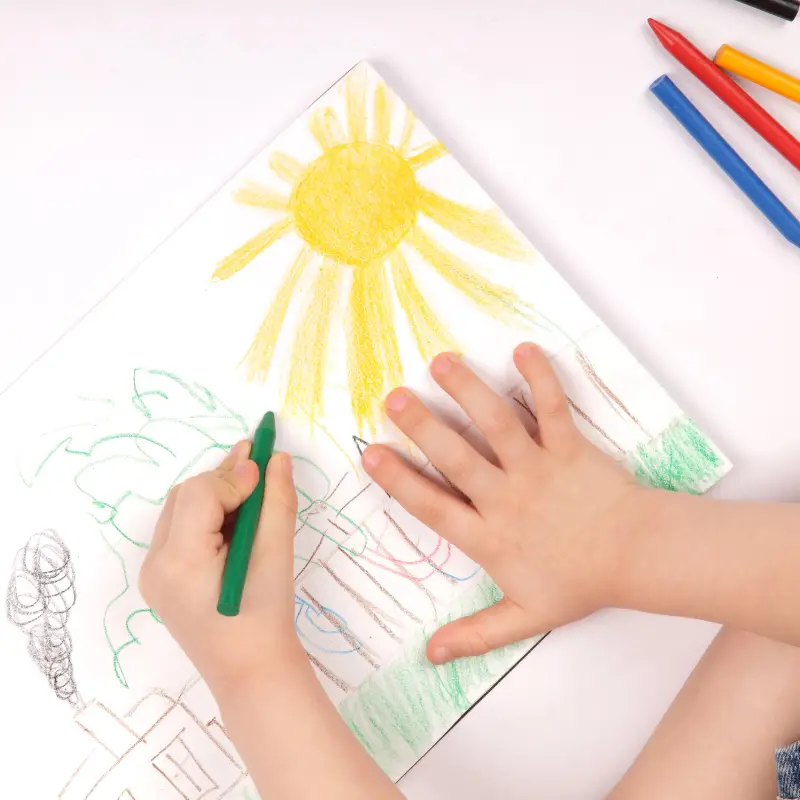
Understanding the Stages of Writing Development
I recognize the journey young children embark on as they explore the vast world of writing, a fundamental skill that lays the groundwork for effective communication and literacy.
It starts with seemingly random scribbles, an expression of their emerging ideas.
These scribbles mark the earliest stage of writing development.
With encouragement and the right support, children progress to drawing shapes and eventually to forming letter-like shapes.
Preschool years are indeed a pivotal time for this evolution.
This period is when fine motor skills and cognitive abilities converge, enabling the creation of capital letters and simple words.
Children begin to understand that writing holds meaning, and they start to form the letters of their name, a significant milestone.
This stage is not just about letter formation but also about grasping the power of written words to communicate.
As they advance, preschoolers experiment with various ways to express ideas, transitioning from using letter-like forms to conventional spelling in meaningful ways.
The Role of Fine Motor Skills
Developing fine motor skills plays a critical role in the journey toward writing mastery for young children.
These skills lay the foundation for the effective manipulation of writing tools, a prerequisite for letter formation and fluent writing.
Engaging in activities that refine these abilities, such as cutting shapes out of paper with scissors, will significantly enhance a child’s hand-eye coordination and pencil control.
The act of molding playdough into various shapes not only strengthens finger dexterity.
It also paves the way for them to form letters of the alphabet with ease.
Incorporating drawing into daily routines serves as a fun way to develop fine motor skills.
Drawing is also a powerful tool for expressing ideas even before conventional spelling emerges.
Through these simple activities, young writers gradually acquire the capacity to create letter-like forms and simple words.
This is marking their initial steps on the path to literacy.
Therefore, recognizing the importance of these skills is essential for anyone supporting the developmental stages of children’s writing.
Pre-Writing Skills: A Foundation
Pre-writing skills have long been recognized as a crucial foundation for later writing development in young children.
These skills, encompassing fine motor activities and hand-eye coordination, lay the groundwork for the ability to form letters and engage in the writing process.
Developing these capabilities early on, such as through play with playdough or drawing, fosters not just letter formation.
It also gives a sense of confidence and readiness for more structured writing tasks.
It’s evident now that these rudimentary competencies serve as the building blocks for children’s writing journeys.
Without this vital foundation, aspiring young writers might encounter unnecessary hurdles as they progress.
Activities that enhance grip strength and fine motor control are instrumental.
They not only support children in holding writing tools effectively but also in maneuvering them with precision.
This precise control is indispensable when it comes to mastering the intricate task of letter formation during the preschool years.
I advocate for integrating fun, simple activities into daily routines.
Making writing relevant to your child can significantly bolster pre-writing skills in meaningful and enjoyable ways.
Fun Activities to Enhance Writing Skills
Engaging young children in the early stages of writing development has proven to be a magnificent journey, filled with exploration and creativity.
There are a multitude of fun activities that enhance these vital skills.
They can integrate seamlessly into both classroom settings and daily routines at home.
Fun Writing Activities
Among these, a few stand out as particularly effective and enjoyable.
- Utilizing Sidewalk Chalk: One cannot underestimate the power of sidewalk chalk in honing fine motor skills and fostering letter recognition in young learners. By encouraging preschoolers to draw letters of the alphabet, simple words, or even their own names on a vast canvas like a driveway or sidewalk, I witnessed a significant boost in their confidence and excitement toward writing. The act of gripping and maneuvering chalk strengthens their grip, promotes hand-eye coordination, and emboldens them to experiment with letter-like shapes and forms in a fun, pressure-free environment.
- Crafting Personalized Picture Books: Another activity that I found to be immensely beneficial involves guiding preschoolers through creating their very own picture books. This process not only supports children in understanding print concepts but also ignites their imagination, allowing them to express ideas and stories in meaningful ways. By drawing illustrations and attempting to label them with letters or simple words, youngsters gain a deeper appreciation for the written word and the power it holds in storytelling, all while developing their fine motor and pre-writing skills.
- Sensory Play: Sensory play enhances fine motor skills by encouraging finger manipulation of various materials like sand, shaving foam, oobleck and playdough, which strengthens hand muscles needed for writing. This play also promotes hand-eye coordination, creativity, and exploration, making learning enjoyable and fostering a love for writing. Additionally, sensory activities help improve focus and language development as children describe their experiences.
These activities have shown themselves not just as methods of teaching but as doorways to new worlds of creativity and expression for young learners.
They serve an important role in a child’s literacy journey, offering a fun and effective way to lay the groundwork for a lifetime of strong writing skills.
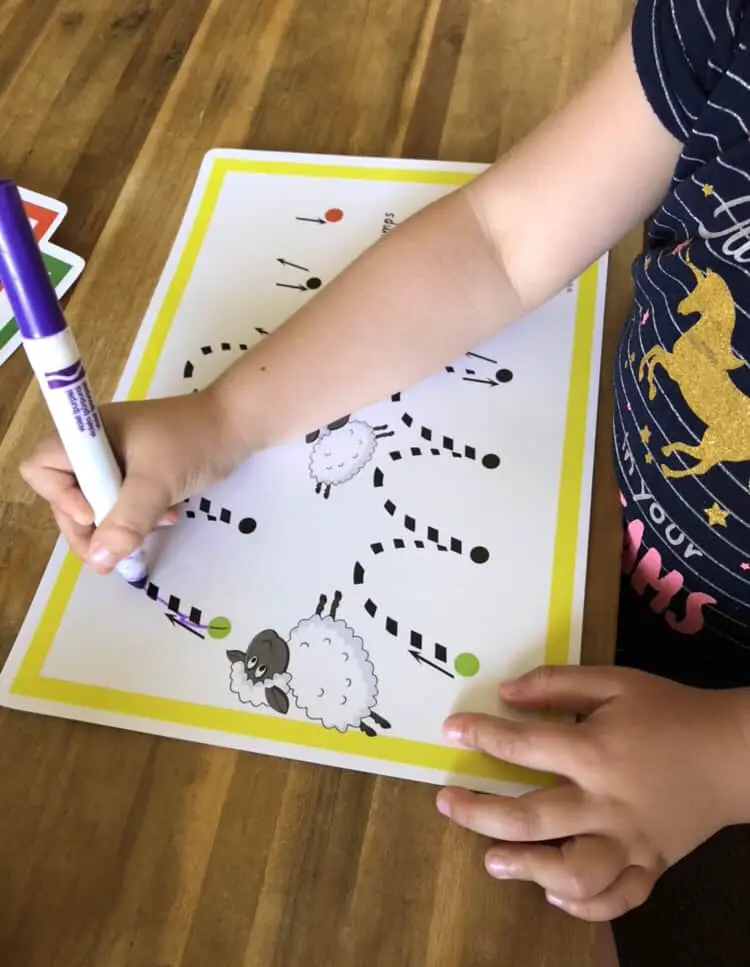
The Importance of Sensory Play as a Prewriting Activity for Preschoolers
Sensory play is a vital component of early childhood education.
Sensory play provides preschoolers with engaging experiences that stimulate their senses and foster essential skills.
When it comes to prewriting activities, sensory play offers numerous benefits that lay the groundwork for successful writing development.
1. Enhancing Fine Motor Skills:
Sensory play often involves materials like sand, playdough, water, or rice, which encourage toddlers to manipulate objects using their fingers. This hands-on experience strengthens the small muscles in their hands and fingers. Fine motor skills are crucial for holding a pencil and forming letters later on.
2. Promoting Hand-Eye Coordination:
Activities such as pouring, scooping, or threading during sensory play enhance hand-eye coordination. This skill is essential for writing, as it helps children learn to control their movements when guiding a writing tool across paper.
3. Encouraging Exploration and Creativity:
Sensory play invites children to explore different textures, colors, and shapes, sparking their imagination. This creative exploration not only makes learning enjoyable but also encourages children to express themselves. This can be done through drawings and writings, fostering a love for the written word.
4. Building Focus and Attention:
Engaging with sensory materials can captivate a child’s attention and improve their focus. As they immerse themselves in these activities, they practice sustaining attention. This is a skill that is beneficial when they transition to structured writing tasks.
5. Facilitating Language Development:
As children engage in sensory play, they often describe their experiences, enhancing their vocabulary and communication skills. This language development is key when they begin to articulate their thoughts in writing.
6. Reducing Anxiety Around Writing:
By introducing writing through sensory play, children can approach the skill in a relaxed and playful environment. This reduces anxiety and pressure, helping them build confidence in their writing abilities.
Incorporating sensory play into preschool curriculums supports fine motor and cognitive development.
All while fostering a positive attitude toward writing for a young student.
By allowing preschoolers to learn through their senses, educators can lay a strong foundation for their future literacy skills.
Sensory play makes the whole process enjoyable and engaging.
Incorporating Writing into Daily Routines
We often overlook the simple activities that naturally integrate writing into our daily lives.
Grocery lists, for example, can become a fun way to foster literacy skills among young children.
I would suggest turning this task into a collaborative effort.
This approach not only enhances their fine motor skills but also introduces them to the concept of print awareness in a meaningful context.
Similarly, the act of sending birthday cards offers a unique opportunity.
Encourage your child to express ideas by scribbling a message or attempting to sign their name.
This not only boosts their confidence in using writing tools but also makes them active participants in expressing affection toward family members.
Beginning a gratitude journal is a great way to build a child’s self-esteem.
They can make writing fun with their journal entries with writing prompts which can become a beneficial way to bond with your child.
These simple yet effective strategies allow us to support children in developing strong writing skills from a young age.
By embedding such meaningful ways of writing into our routines, we lay a solid foundation for their emergent writing experiences, ensuring they see the value and joy in the written word.
The Importance of Oral Language Development
Developing oral language skills plays a pivotal role in supporting emergent writing experiences among preschool children.
From the earliest stages, preschoolers absorb the sounds of the alphabet and the rhythm of speech, laying the foundation for phonological awareness.
This awareness is not just about hearing sounds.
It seeks to bridge the gap between spoken and written words.
Young learners often start by expressing ideas through speaking before they manifest them in written forms.
For instance, a child’s ability to tell a story about their daily routines significantly enhances their capacity to transcribe these narratives onto a piece of paper.
Oral language development, therefore, serves as a starting point from which children expand their understanding of print concepts, eventually recognizing that those same verbal stories can be represented through letter-like forms and conventional spelling.
This transition is not instantaneous but forms part of a continuum in which emergent writing skills evolve from oral expressions.
By engaging in simple activities that promote oral language, such as describing pictures in books or recounting events from their day, young children find new ways to connect their spoken words to the powerful tool of writing.
Through these meaningful interactions, we lay a critical framework that supports a child’s growth in literacy from a young age, demonstrating how vocal expressions are indeed the precursor to a lifelong journey with the written word.
Print Concepts and Letter Recognition
Young learners embarking on their writing journey must grasp the essence of print concepts.
This knowledge sets the stage for all future literacy skills.
It introduces them to the idea that symbols on a page hold meaning and that these symbols can be decoded to unlock that meaning.
Understanding the directionality of text, from left to right and top to bottom, serves as a cornerstone for reading and writing in languages that follow this pattern.
It aids in the fluid formation of letters of the alphabet, guiding young writers through the maze of written communication.
Recognizing letters, both uppercase and different words accelerates the process of making sense of texts.
It’s a thrilling moment when children realize that the letters of their name and those scattered across the pages of picture books are the same building blocks used to express ideas, tell stories, and share information.
This realization is a powerful tool, propelling young minds towards greater literacy achievements and inviting them to explore the written word in various ways.
Engaging Families in the Writing Journey
Supporting a child’s journey into the writing world is a commitment that pays dividends in their literacy and cognitive growth.
We, as family members, play a crucial role in this developmental milestone.
I have discovered through experience and research that embedding writing into our daily routines offers a seamless, fun way to enhance these valuable skills.
Creating grocery lists together or writing birthday cards for relatives not only strengthens fine motor skills but also introduces young children to the practical aspects of writing.
Using materials like sidewalk chalk for outdoor drawing sessions encourages preschool children to explore letter formation in a fun activity.
It fosters not only their fine motor activities but also their visual perception and alphabet knowledge.
Another effective method involves asking them to help in making simple labels for household items.
This exercise promotes familiarity with the letters of their name and various simple words, serving as a starting point for recognizing and forming different words.
Lastly, it’s fruitful to incorporate games that involve the sounds of the alphabet.
Such activities can be transformative, laying a foundation for phonological awareness, one early childhood skill that is critical in the writing process.
By adopting these simple activities, we offer our young learners a balanced platform to express ideas, explore new ways of learning, and see writing in meaningful ways outside the conventional classroom environment.
Choosing the Right Writing Tools and Materials
I understand the critical role of providing young children with a variety of writing tools and materials.
This approach has shown immense benefits in encouraging their exploration of writing in numerous forms.
With access to different writing instruments, preschool children find new ways to express ideas and solidify their understanding of letters and words.
They might grasp a crayon in their right hand to scribble their first letter or use a marker to draw letter-like shapes, laying the foundation for strong writing skills.
Equipping them with various materials such as sidewalk chalk, pencils, and interactive worksheets also supports their fine motor skills and letter formation.
It becomes a powerful tool in making the early stages of writing development both fun and educational.
Recognizing that children develop at different rates, incorporating a broad spectrum of writing tools ensures that each young writer finds something that resonates with their interests and current writing stage.
Aim to create an enriching environment that fosters creativity, confidence, and growth in preschoolers’ writing journeys.
Preschool Teachers: Facilitators of Writing
Preschool teachers hold a pivotal position in nurturing the emergent writing skills of young children.
They introduce the alphabet and its sounds in playful and interactive ways, laying the foundation for phonological awareness.
By providing a variety of writing materials, from crayons to sidewalk chalk, teachers encourage preschoolers to experiment with letter-like shapes and forms.
This exploration is a central part of the stages of writing development, moving from random scribbles to the conscious creation of letters.
In their classrooms, teachers become facilitators of writing by integrating pre-writing activities into daily routines.
Simple tasks such as signing a birthday card or drafting grocery lists with the help of family members at home extend the learning environment beyond preschool.
These educators understand that each child’s writing journey is unique.
They celebrate every milestone, from the first awkward grip of a pencil to the moment a child proudly recognizes the letters of their name.
Preschool teachers indeed play an indispensable role in setting the stage for a lifetime of literacy.
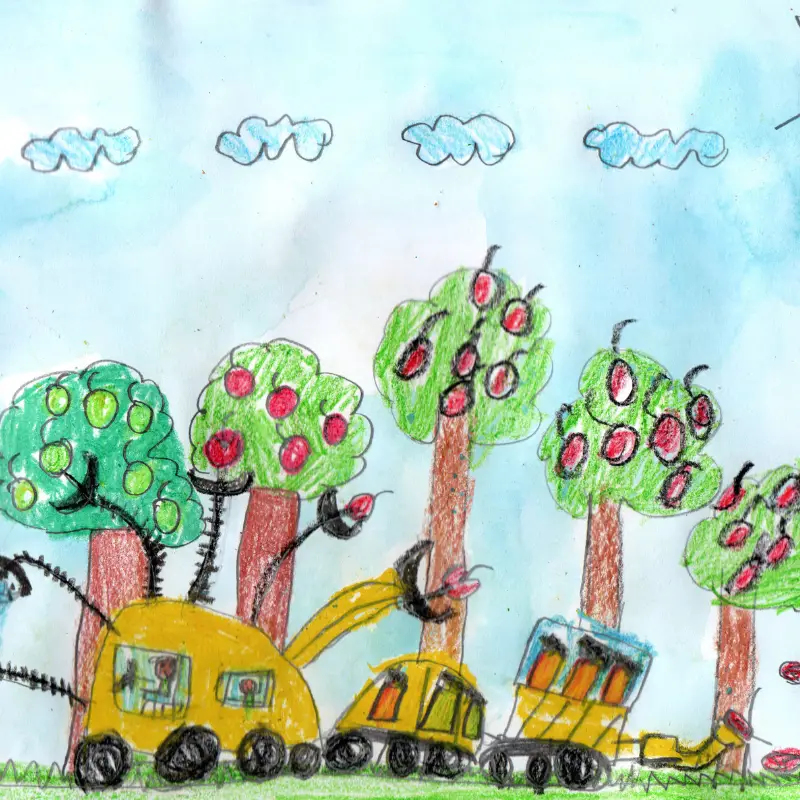
Embarking on a Literacy Adventure
We stand on the brink of a thrilling period in a child’s life, where each scribble and letter forms a stepping stone towards literacy.
I’ve witnessed how early writing skills fuse the raw beauty of thoughts with the structure of language, molding preschoolers into not just writers, but creators of their universes.
It’s a journey that we, as mentors, have the privilege to guide.
Through the lens of my experience, I’ve seen the powerful tool that writing becomes for young writers.
They start by grasping pencils, forming those mesmerizing first letters of their name, and gradually, they carve out sentences that embody their burgeoning ideas and dreams.
This process isn’t just about the mechanical act of writing. It’s about igniting a love for expression, building a foundation in fine motor skills, and enhancing hand-eye coordination in fun, meaningful ways.
The stages of writing development unfold uniquely for each child, revealing new ways to understand their world.
As they explore uppercase letters and wrestle with the rules of phonological awareness, children rely on us to supply the right tools—be it sidewalk chalk or picture books—and the encouragement to see their names and simple words come to life.
Let’s embrace this adventure, ensuring our presence enriches their journey from emergent writing to confident storytelling.
Together, we hold the power to foster a lifelong passion for the written word, one letter at a time.
